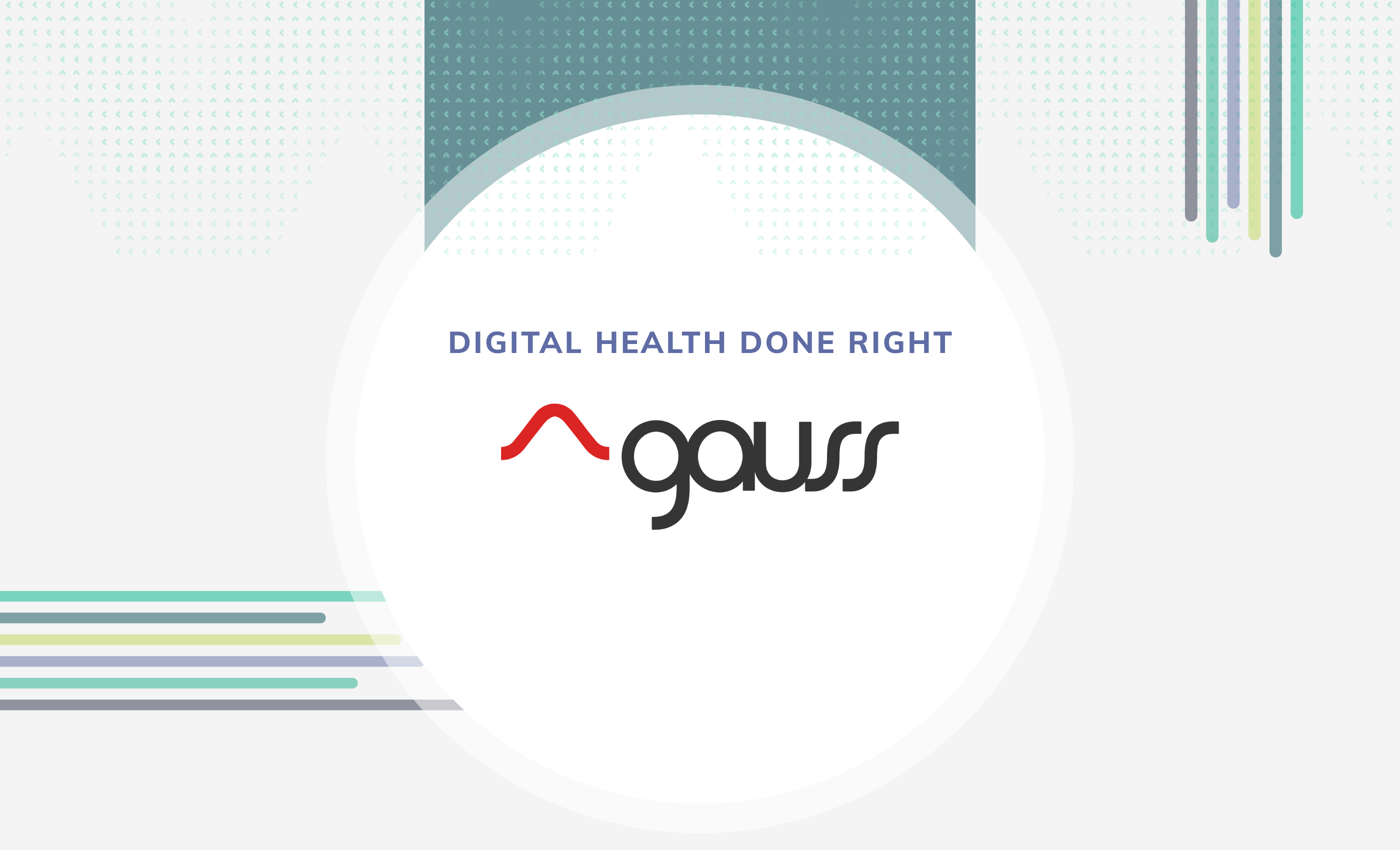Digital Health Done Right: Gauss Surgical
May 16, 2017

Digital Health Done Right is a Redox Blog Series that shines a light on a member of our interoperable network. We believe in what our partners are doing and want to share their stories and outcomes with you. Some of our digital health application partners have created solutions for healthcare problems that seem like no-brainers. Glooko, for example, created an awesome platform for diabetes management, and Docent found a way to use technology to inject some much-needed humanity into the patient experience.
If we were asked to think of ways technology could immediately improve healthcare, those kinds of solutions would be at the top of the list because their workflows are familiar and their impact is huge.
But, beyond these well-understood use cases, there are countless workflows within healthcare that could benefit from a complete overhaul, many of which we aren't necessarily even aware of. Take, for example, the issue of blood loss during surgery and how surgeons assess whether or not patients need a blood transfusion. What does workflow look like? How do they measure this? Where is it recorded? When do patients slip past that crucial mark of not needing a blood transfusion to definitely needing a blood transfusion?
Enter Triton
Luckily, Gauss Surgical is a health-tech company that addressed those questions by developing Triton, an innovative application that enables surgeons to accurately measure the exact amount of blood lost during surgery. Used on an iPad, Triton has a built-in foot switch that takes pictures of surgical sponges that soak up blood, counts the sponges, and then sends that information to their cloud server for processing. After the image is analyzed, Triton sends an accurate measure of hemoglobin mass loss back to the surgeon.

Developed only a few years ago, this technology is an incredible leap forward from the previous (and highly inaccurate) method of eyeballing blood loss. (Seriously. That’s how surgeons measured it.)
The coolest part about Gauss is how their technology functions—Triton uses an FDA-cleared image processing algorithm to analyze the pictures of blood-soaked surgery sponges. These spatial algorithms use Feature Extraction Technology to automatically filter out non-blood substances like saline or amniotic fluid, ensuring that the final measurement delivered is an accurate estimate of only the volume of hemoglobin mass lost.

This whole process—from picture taken to measurement inputted into the EHR—happens in under ten seconds, allowing surgeons to monitor blood loss accurately and in near real-time.
Healthcare’s bad blood problem
While this new workflow is a significant improvement over the previous method, it becomes even more impressive when you realize it addresses a massive inefficiency in healthcare; an estimated 20-60% of all blood transfusions prove unnecessary, driving $10 billion dollars in annual waste.
Furthermore, blood transfusions are the single most commonly billed hospital in-patient procedure. Each year, 15 million transfusions are performed in the US alone, and blood transfusions represent the eighth highest savings opportunity for hospitals with an average savings of $1.06 million per hospital per year.
That represents an unbelievable amount of waste, and the number only grows when you factor in the common complications that can arise from blood transfusions such as infections, adverse reactions, or surgical errors.

Beyond the ROI and numbers-driven-data—which, to be sure, are incredibly valuable for health systems—the main benefit of Triton is that it keeps patients from undergoing dangerous and unnecessary blood transfusions. As the above graph shows, the death rate from blood transfusions is high for patients who don't receive enough blood and jumps dramatically when patients are over-transfused. Accurate blood measurement is a real problem, and solving it results in more patients landing in the "well-transfused" middle ground and continuing on to live long, healthy lives.
Highly Usable High-Tech
For sounding (and really, being) so high-tech, Triton requires minimal training to use—it was built with an intuitive iPad-based interface that's easy for surgeons to understand. Beyond that, Triton seamlessly integrates with surgical workflows in all major EHRs, meaning it’s nondisruptive to implement and the benefits from using the application are quickly seen. And, for the health system higher-ups who need to worry about patient privacy and safety, Triton, its server, and its technical integration with the EHR are all HIPAA compliant.
It’s truly amazing how many problems can exist within one surgical workflow, and it’s even more amazing that a company can address so many issues with a single application. The benefits of utilizing technology in healthcare are boundless, and it’s the innovative thinkers at the forefront of the industry who are finding ways to perform procedures and workflows more efficiently. At the outset, doing so saves health systems money and time, but more importantly, accurately measuring blood loss has the power to save lives. That’s why we’re proud to integrate Triton and have Gauss in our interoperable network.
